A historic Independence, Missouri visit wouldn’t be complete without a stop at the Harry S. Truman Library & Museum. Growing up in Kansas City, we were well aware of Truman’s ties to the area but had not really studied much about the man. Since the Truman Library had recently completed an overhaul, we felt it was the perfect time to learn more about our 33rd president. A sunny Spring day was the setting for our visit and we were excited to see the recognizable statue of Harry welcoming us.
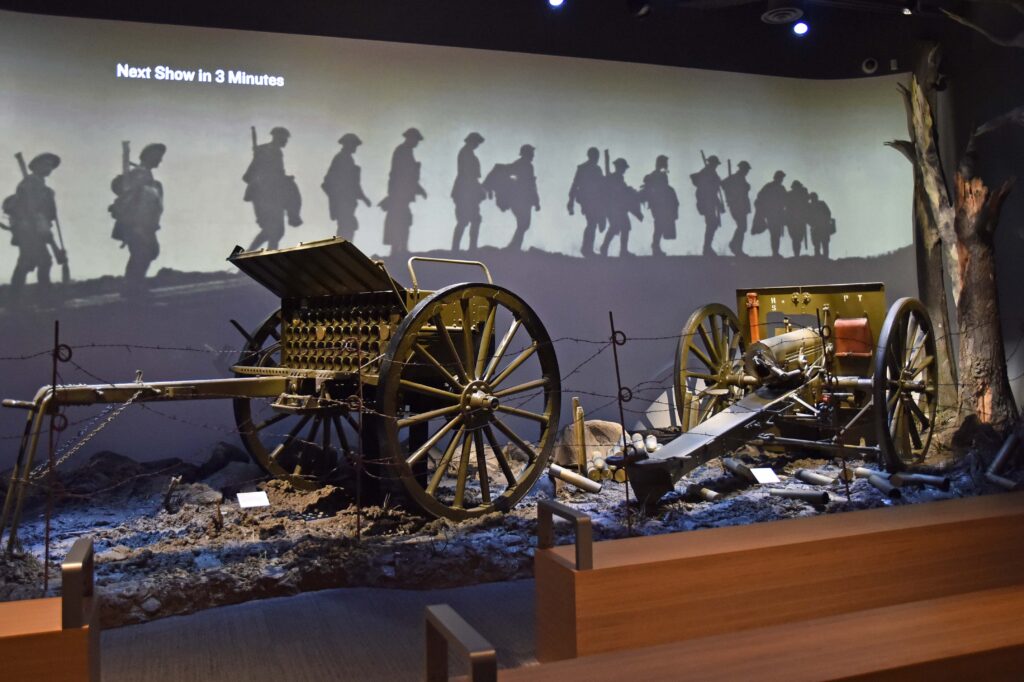
Truman Museum – Design for the Masses
It had been a few years since our last visit but we could immediately see the changes. The Truman Museum has added more audio-visual exhibits. This helps draw visitors into the story of this man from Missouri. As we progressed through the museum, we found the films to be informative. Each would add the building blocks of information that create a portrait of Harry S. Truman.
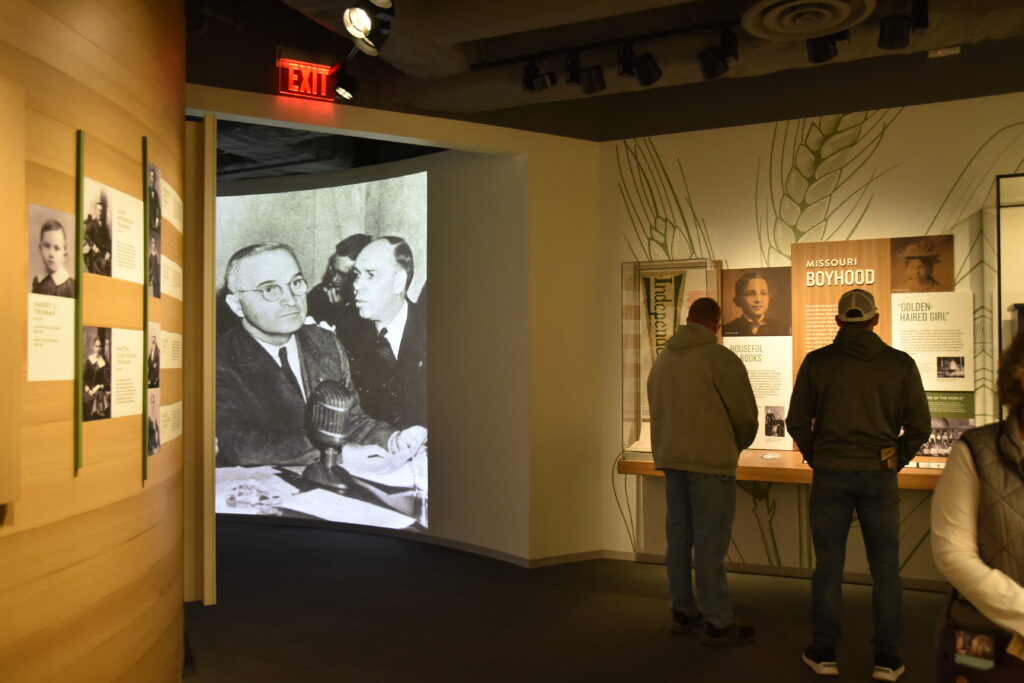
The Early Years
Harry’s early years were spent on farms around the big city’s outskirts. At the age of six, his folks moved to Independence, Missouri. Harry’s mother encouraged him to explore. He began piano lessons at seven and became quite skilled. Harry was also a voracious reader and enjoyed history. His first venture into politics was working as a page at the 1900 Democratic National Convention in Kansas City. Harry graduated high school in 1901 and attended one year of college. While he never gained a college diploma, his one year of business studies would pay off for him later.
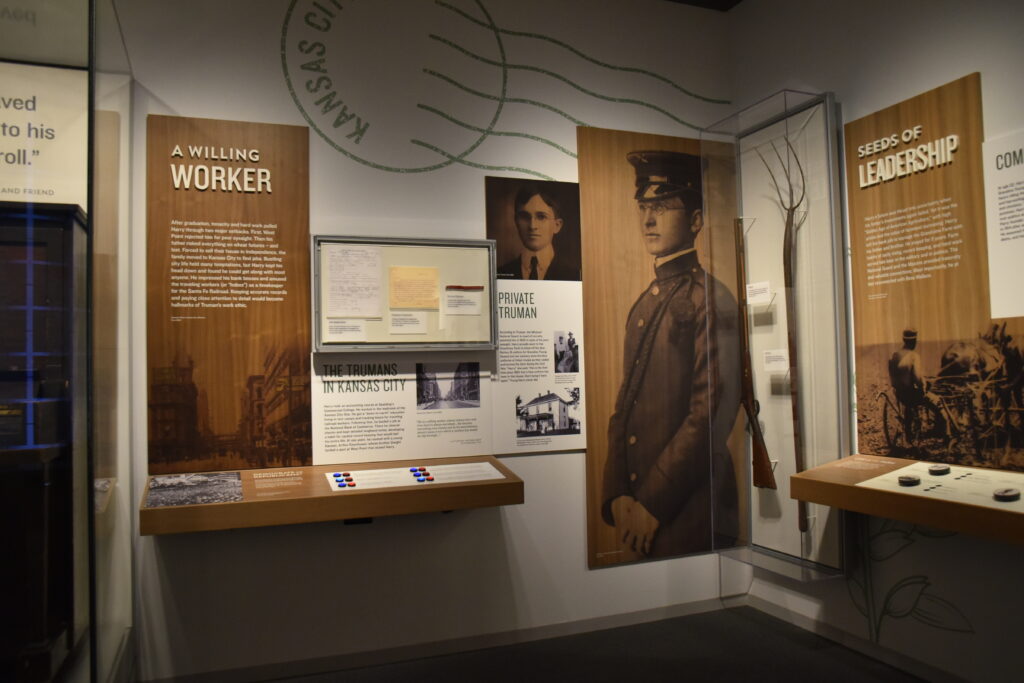
Entering Service Life
In 1905, Truman enlisted in the Missouri National Guard. He would serve 6 years in the field artillery regiment. To prevent his poor eyesight from keeping him out of service, Harry memorized the eye chart. When the U.S. entered World War I, Truman would rejoin his artillery division. His time in Europe would teach him new leadership skills. These would prove invaluable with his return to Missouri politics. During his service, he met the nephew of Tom Pendergast, who was a political boss in Kansas City. This connection would help propel Harry into politics.
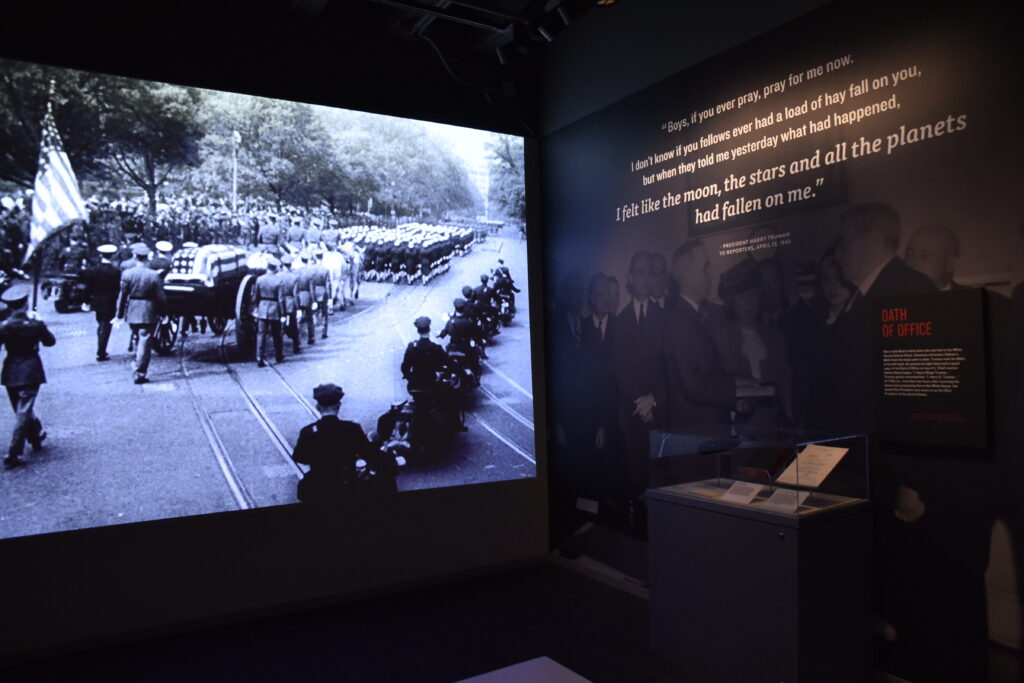
Taking Office in Difficult Times
Truman’s political career included serving as a Jackson County judge, before setting his sights higher. With Pendergast’s assistance, Harry won a U.S. Senate seat in 1934. Having lived through The Great Depression, Truman found himself a champion against Wall Street greed. The Truman Library was filling our minds with a ton of historical information we must have missed in school. When President Roosevelt decided to seek a fourth term, his advisers knew his health was a concern. They knew there was a high probability that he would not survive another four years. Truman was selected to be his running mate, as he was seen as an asset to the Democratic Party. Truman had been vice president for 82 days when Roosevelt died. On April 12, 1945, Truman was sworn into office.
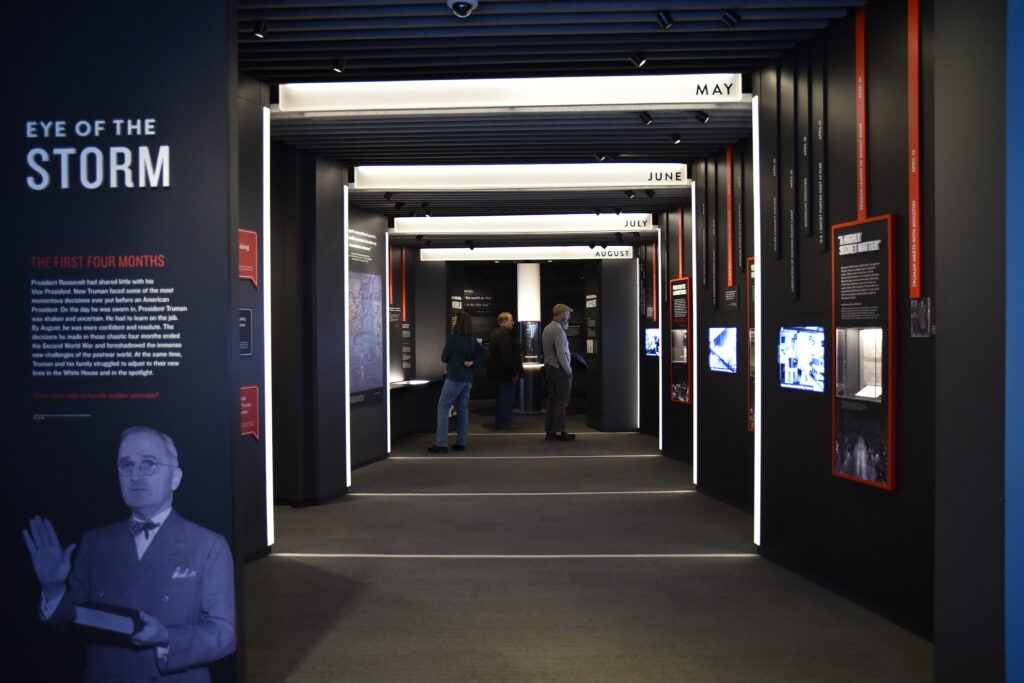
The War in Europe
After the funeral of FDR, Truman set to work reassuring the country of victory in the war. On a side note, on April 18th Truman officially declared the first Mother’s Day, to show “gratitude, love, and devotion” for mothers. The next section of the Truman Museum explains the circumstances that faced Truman after he was sworn in. The country was in the waning years of World War II. By May, the war in Europe had ended, and it was time to begin the reduction of troops. Japan was issued a directive to surrender but refused. Expectations are that the war in the Asian Theater could drag out another year, and cost many more lives. Truman made the difficult decision to use the newly tested nuclear weapons. On August 6th, and 9th, the United States dropped atomic bombs on Japan. The war with Japan ended on August 15th, 1945.
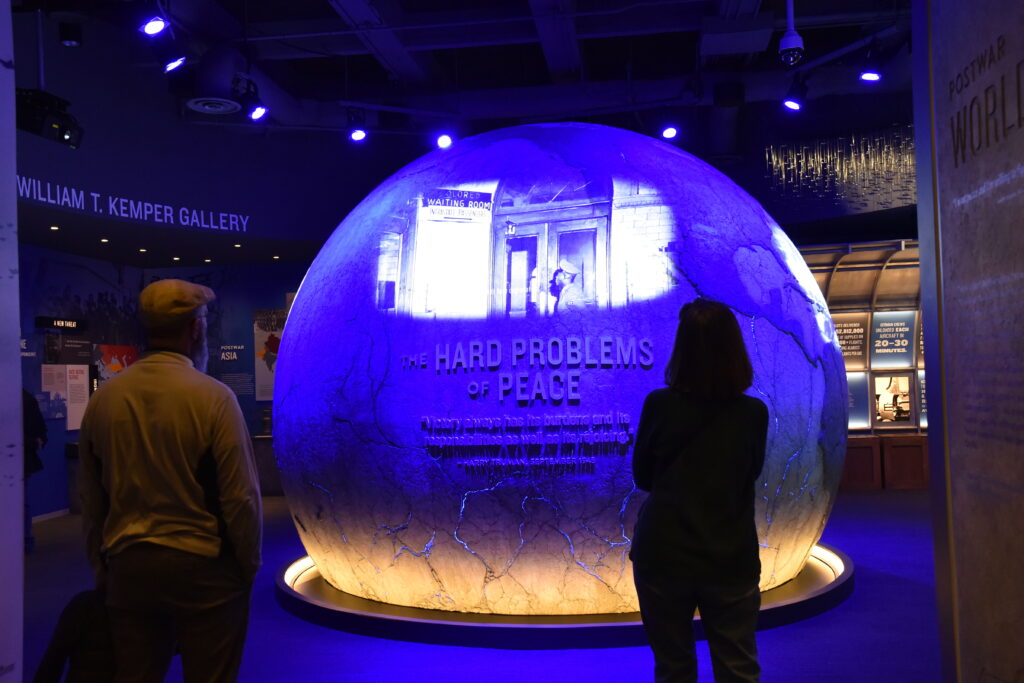
Post War Fears
After the war, Americans were fearful of a return to the depression that had gripped the country prior to the war. Instead, the economy boomed as pent-up consumer spending boomed. The Marshall Plan was put in place to help Europe recover economically, but the political atmosphere was continuing to change. Communism had taken a foothold and was spreading across the continent. This set the stage for the development of the Cold War. In America, old problems were once again rising to the surface. The year was 1948, and Harry Truman was facing re-election. Besides facing a Republican-controlled Congress, his support of Civil rights had created a rift in his own Democratic Party.
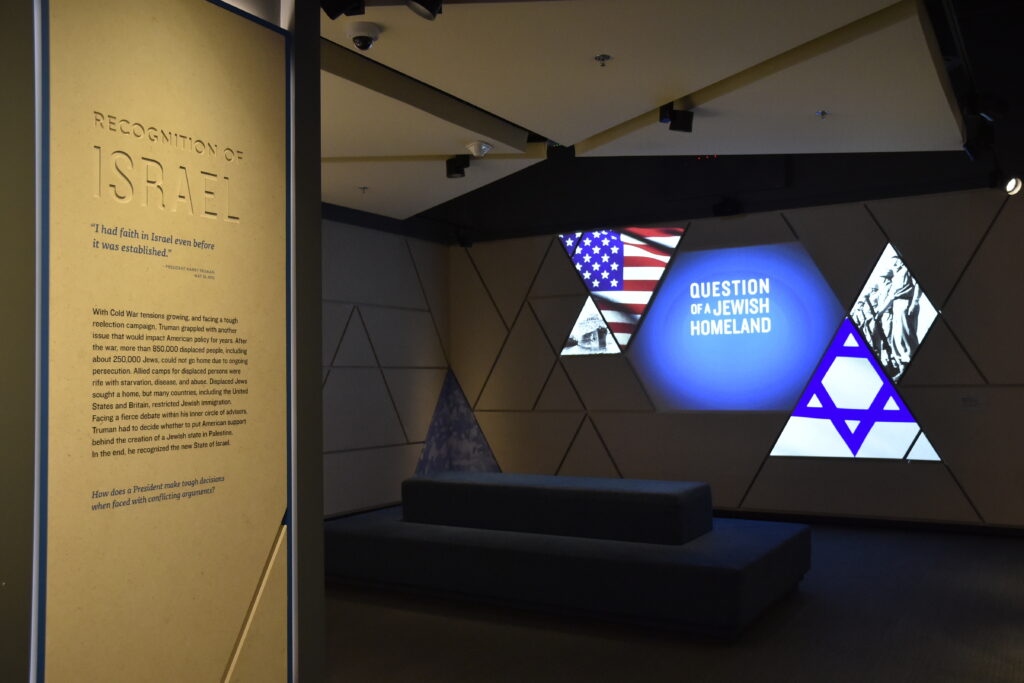
A Political Upset
Truman’s humble beginnings manifested in his belief in fairness for all. With the election only months away, Truman was not about to shirk from his beliefs. The spring of 1948 brought increased turmoil to the Middle East. When Israel became a state, on May 14th, President Truman was quick to recognize it formally. Truman’s second term was marked by an increase in unrest in Asia. The Soviets had developed their own nuclear program, and China was in the midst of change, after the fall of Mao Tse-tung. The Korean peninsula would be the site of the next armed action, as the conflict increased. The United States, under Truman, would enter the Korean War, as part of a NATO coalition. He would not oversee the end of the conflict, as he left office in 1952.
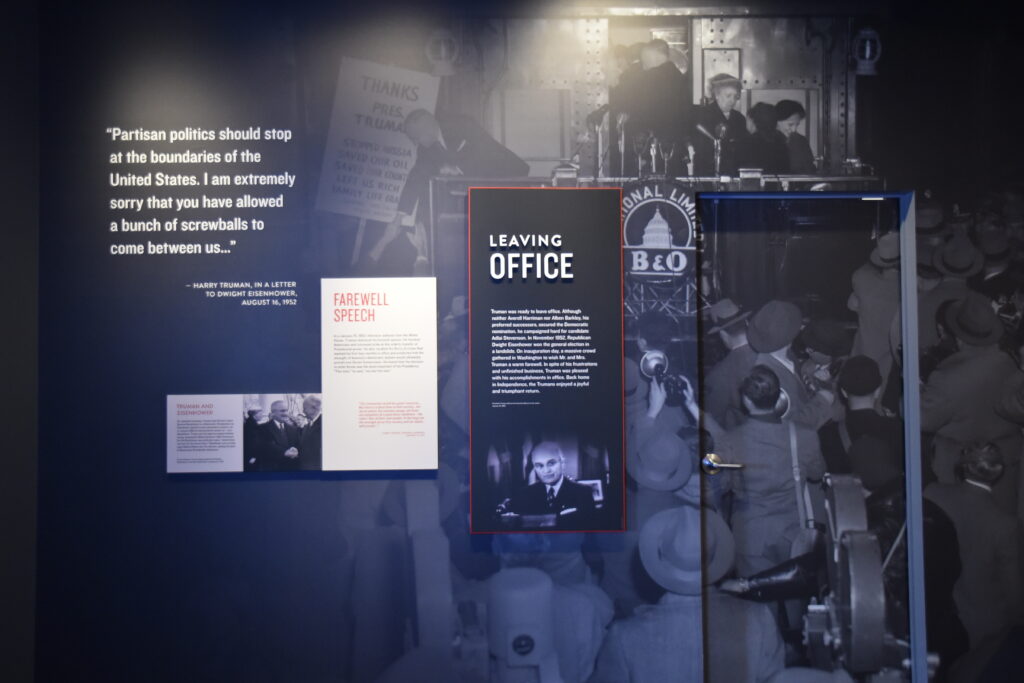
Heading Home
In 1952, America was brimming with prosperity. Even with this success, Truman’s approval rating had been declining since the United States entered the Korean War. Throughout the museum, we found the written words of Truman himself. These offered glimpses into the mind of a man who seemed simple from the outside, but in reality, was extremely complex. Even though he left office with a 30% approval rating, history would eventually confirm the importance of his actions during his time in office. For the rest of his years, he dedicated his time to developing his library. He stressed educating youth on the importance of understanding your government and history. These were too important to leave to chance, so he made sure that ” The buck stopped here”.

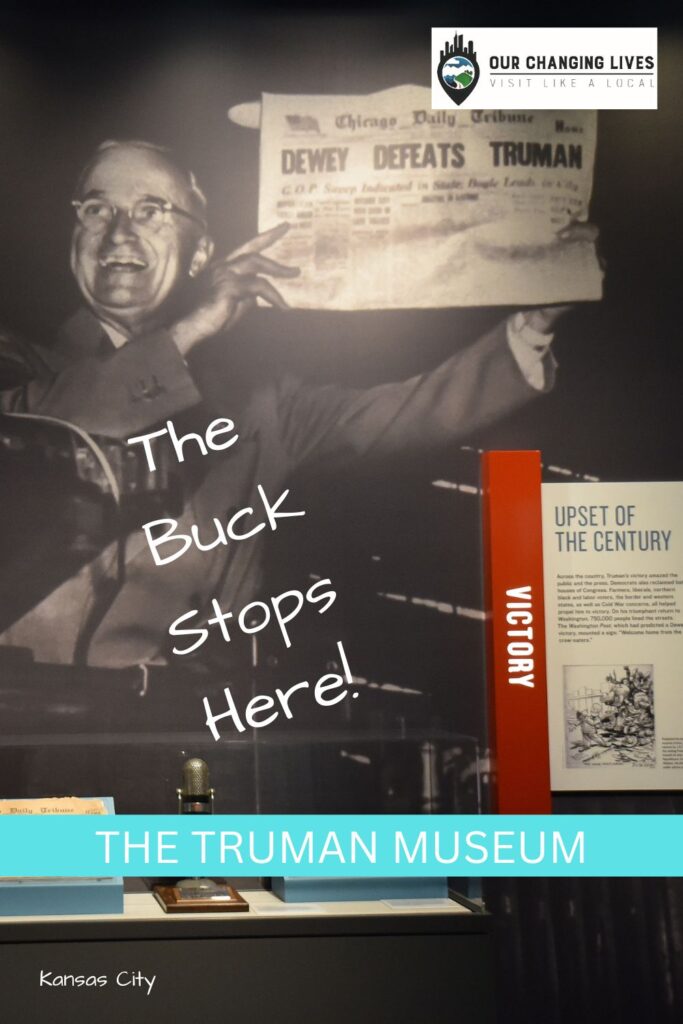

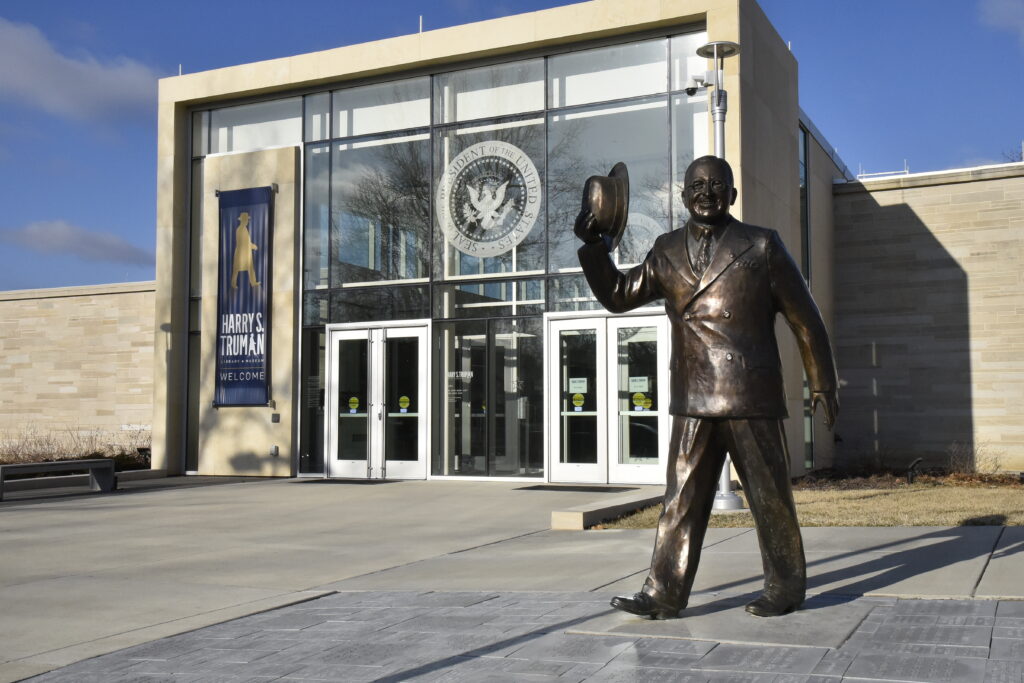
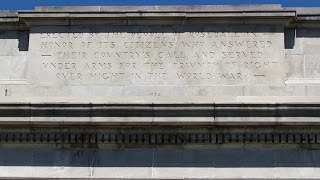


Great summary of a visit to the Truman Library and Museum. It’s a must-see for KC visitors and you captured the essence of a visit. Well done!
Thanks! We waited too long to gain an appreciation for presidential museums. Lots of lost time to make up.